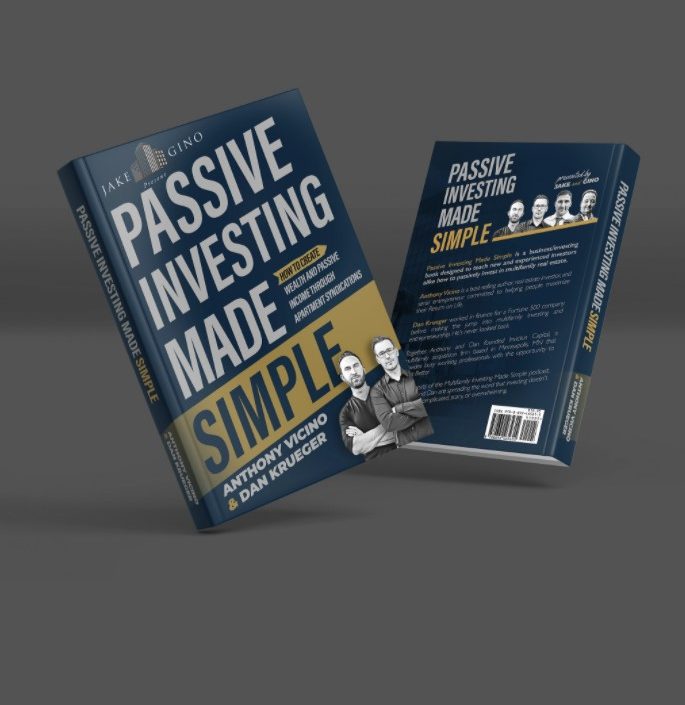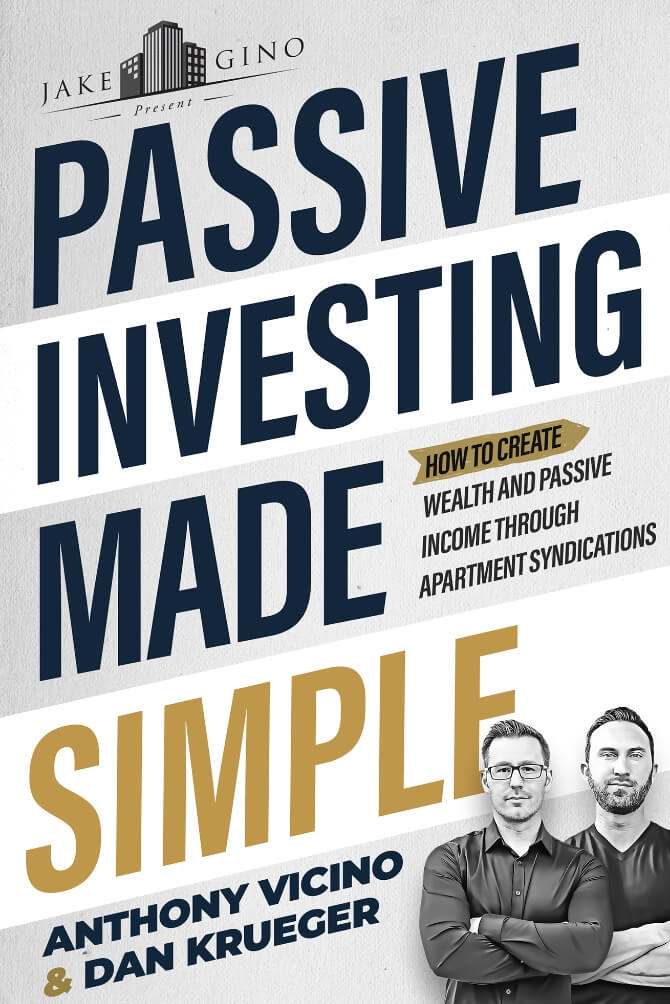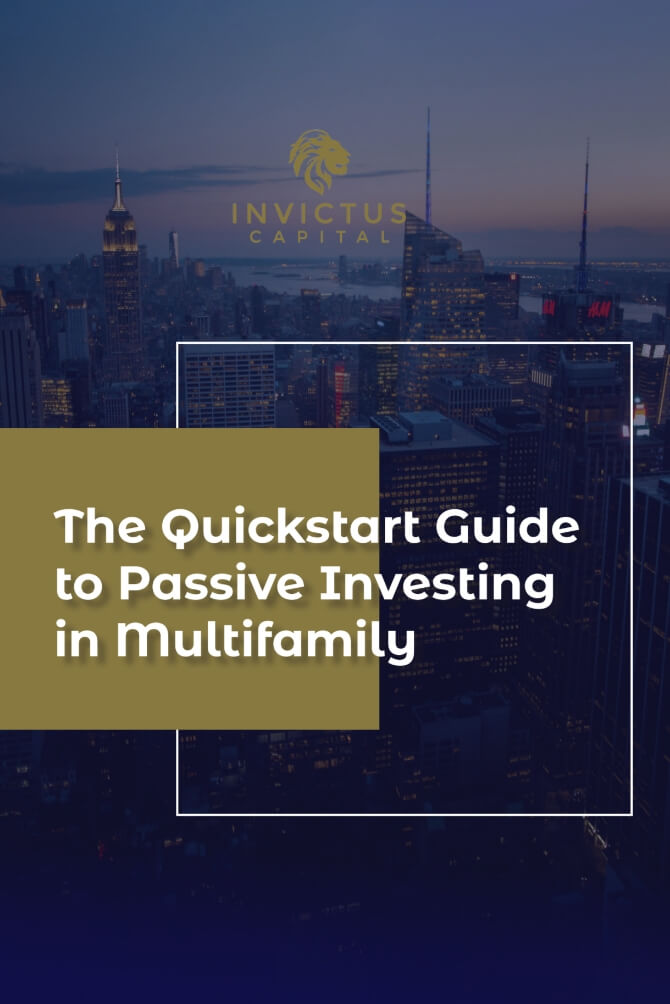For today’s episode, we will be discussing part two of the capital stack, senior debt.
We will go over who provides the debt?
We will talk about these things…and more in another episode of Multifamily Investing Made Simple in under 10 minutes.
Tweetable Quotes:
“we’re going to be focusing right now on what’s called the senior debt or the debt that’s in the first position or effectively the person, individual entity, whatever you want to call a bank, this person or entity is going to have the most security” – Dan Kreuger
“I think those are generally the most common terms for lien I always like to substitute the word dibs, so first dibs. If something goes tits up, then they get first dibs on the property.” – Anthony Vicino
“it’s almost like you’re passing a plate of hors d’oeuvre around a table and where you’re at in the capital stack, it’s kind of like where you’re sitting around the table. You have to wait until that plate gets passed around to you. And if there’s nothing left on that plate, by the time it gets to you, then you don’t get anything.” – Dan Krueger
LEAVE A REVIEW if you liked this episode!!
Keep up with the podcast! Follow us on Apple, Stitcher, Google, and other podcast streaming platforms.
To learn more, visit us at https://invictusmultifamily.com/
**Want to learn more about investing with us?**
We’d love to learn more about you and your investment goals. Please fill out this form and let’s schedule a call: https://invictusmultifamily.com/contact/
**Let’s Connect On Social Media!**
LinkedIn: https://www.linkedin.com/company/11681388/admin/
Facebook: https://www.facebook.com/invictuscapitalventures/
YouTube: https://bit.ly/2Lc0ctX

The Capital Stack Part Two (Senior Debt)
Anthony Vicino: [00:00:15] Yo, yo, yo, welcome to Multifamily Investing Made Simple, the podcast, it’s all about taking the complexity out of real estate investing so that you can take action to date. I’m your host, Anthony, the CEO of Invictus Capital, joined as always by Dan. I’m fresh out of debtor’s prison trigger.
Dan Krueger: [00:00:35] Sorry, what prison
Anthony Vicino: [00:00:36] Debtor’s prison do you remember? That was a thing back in the day, the old days where if you took out debt from your landlord or whoever and you couldn’t repay it, you couldn’t go into bankruptcy. Bankruptcy is a fairly new concept, right, where we create this veil between the corporate and the individual. And that’s a good thing because now you’re not on the hook. If you go into deep, deep debt, they can’t send you to jail back in the day. They would send you to jail. They would send you to debtors’ prison to work off your debt. That sucks. And one of the great things about real estate investing is that we can use leverage, we can take out debt to buy these valuable assets. I don’t know if I would be so inclined to take out this debt if the consequence was I go to prison.
Dan Krueger: [00:01:20] Yeah, that’s true, that actually rings a Bell Now, has written a book a while back that with Charles Dobens recommended to it, it was like the history of banking. Super fascinating.
Anthony Vicino: [00:01:30] Oh, the color of law
Dan Krueger: [00:01:31] Now is the other recommended to what? That was one of them. And then the other one was a history of real estate banking supervision. I think that was actually one of the things that kind of came up there
Anthony Vicino: [00:01:42] In the early pages. I’ve never checked that one out. But this is all apropos. If you’re listening to this and you’re like, what are these guys going? These yahoos? Don’t worry, guys. We’re in part two of the Capital Stack series where we’re going to be diving into the individual components that comprise the capital stack. If you don’t know what I’m talking about when I say the words capital stack, then you need to go back and listen to last week’s under 10-minute episode where we dive into that, because today we’re going to start building on the foundation and specifically we’re going to talk about debt, the debt portion of the capital stack. Let’s dive into that. Dan, who provides the debt? This is kind of a trick question. So who provides the debt?
Dan Krueger: [00:02:22] Could be anybody that wants to lend you money. He knew the answer could be a bank, could be just a guy with some money back. We’re talking about here, if you listen to the other initial episode where he introduced the concept of capital stock, you know that there could be multiple forms of debt. But we’re going to be focusing right now on what’s called the senior debt or the debt that’s in the first position or effectively the person, individual entity, whatever you want to call a bank, this person or entity is going to have the most security. They’re going to have the first been on the property, which means if anything goes south, they’re getting paid first. They take ownership of the property and we can get into all the subsequent levels later. But today we’re going to be focusing on that senior debt FirstLine and see what else might this position be called.
Anthony Vicino: [00:03:14] I think those are generally the most common terms for Fairline. I always like to substitute the word dibs. So first dibs. If something goes tits up, then they get first dibs on the property. The second lien is after the first guy is paid out. Then the second guy gets dibs. And so as we go up the capital stack, your dibs are worthless. So we’re talking about here is the senior debt, which is generally in real estate, majority of the time going to come from some kind of bank, community, bank, regional bank, Freddie, Fannie, like whoever. It’s going to come from some kind of organization in exchange for the security of knowing if your deal goes south, that they get to come and take your property back. In exchange for that, they’re not going to get great returns. They’re only they’re going to get the lowest returns of anybody on the capital stack. Right now, we’re in a historically low-end environment. So that’s three and a half percent. Let’s say if you’re going to a hard money lender, which might be another form of somebody taking the debt position to somebody coming in and lending just the hard money. And this is maybe on a short-term fix and flip. If you go and buy a building and you want to flip it six months later and it doesn’t quite qualify for a bank or it’s too convoluted to get involved with the bank, you might go to a hard money lender and get it done that way. The thing about the debt, though, is it could be anybody. It could be your uncle, it could be your sister. If they have the money and they want to lend you it like you don’t need to get the bank involved.
Dan Krueger: [00:04:45] Yeah. Yeah. It’s basically just who has that first position in the way I like to describe it is that they use the word dibs, which I like because it’s much more intuitive for the average person. But another way to think about this is there’s a certain order of operations as to who gets paid. And it’s almost like you’re passing a plate of orders around a table and where you’re at in the capital stack, it’s kind of like where you’re sitting around the table. You have to wait until that plate gets passed around to you. And if there’s nothing left on that plate, by the time it gets to you, then you don’t get anything. But being in that senior lender position, that first position, the capital stack as senior debt, that means that plate of order or terms or in this case, money goes to them first. They take what is owed to them and then it gets passed. It goes next. And as you go down that line, there’s a chance that there might not be anything left, any capital left for you. So that’s how the risk profile increases for these various levels. But basically, the senior debt gets that plate of food, money, or whatever you want to use in the analogy first. So what is the really good analogy?
Anthony Vicino: [00:05:51] I love that analogy. I’ve never heard that before, but it’s great to see
Dan Krueger: [00:05:54] The picture in the office space where they’re like passing the cakes around and gets screwed. He gets
Anthony Vicino: [00:06:00] Nothing. And it’s a perfect example because that plate is you know, sometimes it’s overflowing and it’s up to the ceiling. There’s so much food on it. But the bank only ever gets to take their one handful or like the three pieces. That’s all they ever get to take. They don’t get to take more no matter how much is on that plate.
Dan Krueger: [00:06:19] The reason that is because they don’t have ownership in the fact they have a lean where they can take it. If you don’t fulfill your promise to pay X percent of interest or whatever your immunization schedule is, but they have no ownership, you own the property. One hundred percent, even if the bank gives you seventy-five percent the money you need and you only put in twenty-five percent for your down payment like you’re buying a house, like a bank does not own your house. They could if you renege on your agreement, but you own a hundred percent of the thing. They don’t have any ownership so they just get a coupon payment for whatever it is you agreed to pay them and you maintain one hundred percent ownership of that thing, which is a coupon.
Anthony Vicino: [00:06:54] Now, if you’re the type of investor who’s super risk-averse, maybe you’re late in life and you’re getting close to retirement or maybe you’re young in life and you just don’t want to lose any money. And so you’re looking out for super safe passive investments, a debt investment or like a note is another way it’s phrased in the business can be a really good opportunity where you just get the clip that solid save five percent coupon, that’s maybe a little bit last, maybe four or three percent where you lend the money and you’re guaranteed to get that every single month. It’s. You like that could be a really good investment opportunity. You’re not going to find that too much in apartments indications, but you might find that more. You’re pretty much becoming a hard money lender and a couple of different ways. So that’s a really great option if you’re really risk-averse.
Dan Krueger: [00:07:37] Yeah. Yeah. So it’s a fairly straightforward concept. And really, I think the thing that’s confusing for people with the capping stack in this is first position debt is just the lingo that’s used. But the people just think about this effect as the mortgage they get on their house. That’s exactly what it is. The senior debt, real estate syndication, or anything that has a capital stacked with the senior deposition. It’s the same thing as the bank that gives you the majority of the money that you need to buy your house. They don’t own the thing. You are required to pay them X amount of dollars. And if you don’t, you lose the thing. A powerful tool, but it is a double-edged sword. So used wisely.
Anthony Vicino: [00:08:15] Yep. So that is the senior debt. Not much more that you really need to know as a passive investor on that front. Next week we’re going to show that we’re going to get into a little bit more complicated nuance, which is junior debt or mezzanine debt or subordinated debt, as it’s called. There’s a lot of different ways of looking at it. This can come in a lot of different forms. It’s a little bit trickier. So make sure to tune in next week for that episode. Now, before you go, because you’ve listened to us this long, I’m going to assume you kind of like us a little bit. So if you could do us a favor, go and pick up a copy of passive investing made simple, I believe this episode will be going live on August six. I just looked on the counter. OK, so this is a little bit premature. Sit on your hands. The book’s coming out next week. Are you ready? Put it on your calendar. August 11th. It launches. Go get a copy. The date launches and leaves a review dance showing it on the screen right now so you can see how awesome it is. A lot of blood, sweat, and tears went into this book. But don’t worry, your version is going to be clean. There’s no blood, no sweat, no tears on it. It’s going to be a pristine copy of passive investing made simple. And that’s going to do it for us. Guys, we’re going to see you next week as we dive into mezzanine debt.
[00:09:27] I’m excited.


